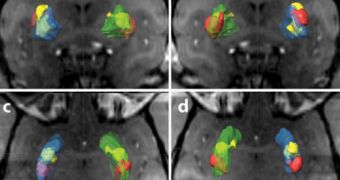A team of researchers in the United States will soon embark on an effort to investigate a promising protein, that could help the fight against Parkinson's disease. The molecule has been under research for years, but some problems persisted over time. The new work aims to eliminate them.
The study will be focused on an experimental gene therapy that uses a protein which helps keep neurons alive. The molecule is called the glial-derived neurotrophic factor (GDNF), and its effects are suited for the fight against this horrible disease.
What researchers are targeting is an improvement in the survival rates of dopamine-producing neurons. This cell population is extremely affected during the development of Parkinson's, and experts say that GDNF could help keep them alive.
If this succeeds, then this would be the first time that the root causes of the disorder are addressed, rather than just its symptoms. The new research is led by scientist Krystof Bankiewicz, who is based at the University of California in San Francisco (UCSF),
Since 1993, when GDNF was first found, several clinical trials have aimed to demonstrate the compound's efficiency, but all have failed entirely, or did not manage to produce the desired results.
But Bankiewicz is convinced that the poor results were obtained because the molecule was not injected in the necessary tissues in the right amount. All trials “turned out to be negative, because the delivery was never controlled,” he explains.
Using a technique called convection-enhanced delivery, the researchers now plan to inject a virus carrying the protein directly into an area of the brain found to be involved in Parkinson's, called the putamen. The injection methods ensure that the fluid is driven deep into targeted regions.
Researchers are basically conducting a troubleshooting experiment. They need to determine which of the factors involved in the equation are failing, and address the issues directly.
Some of the things that influence the outcome include the vector that contains the genes, the delivery system itself, the successful targeting of relevant brain areas , the types of patients that are put through clinical trials, and even the gene itself.
“It still remains to be seen whether GDNF really is something that helps people with Parkinson's disease,” concludes North Shore University Hospital neuroscientist Andrew Feigin, as quoted by Technology Review.

 14 DAY TRIAL //
14 DAY TRIAL //